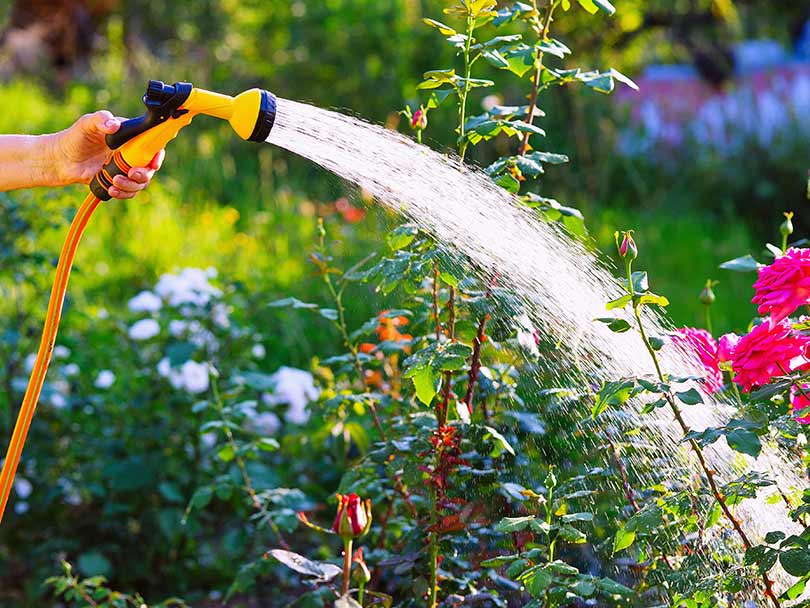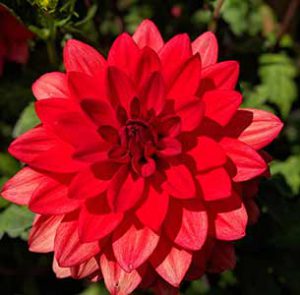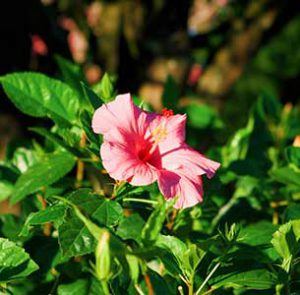By Vicki Spencer, Master Gardener
With plants wilting in the summer heat, people often wonder how to spruce up their gardens. They ask me if it’s too late to plant. The answer is no. It’s OK as long as you give the plants some tender loving care — which basically translates into hydration. In Colorado, heat and intense high-altitude sunlight make plants work harder. With more water transpiring from leaves, there is greater demand for water, which puts greater pressure on the roots.
The advantage of planting in August is that many nurseries have sales. Dahlias are one of my favorites for late planting. They bloom from June through late fall, so there’s still lots of time to enjoy them. Dahlias come in a wide spectrum of sizes and colors with flowers that vary from 1-inch pompons to 10-inch giants. This year, Colorado nurseries boasted the usual wide variety, ranging from Caroline dahlia, which grows 8 inches tall with rich red flowers and brilliant yellow centers, to Gold Crown, which grows up to 4 feet with cactus-like golden flowers. Both do well in full sun to partial shade. As an added bonus, the more you cut dahlias the more they bloom, so you can create indoor bouquets to enjoy inside as well.
Hardy hibiscus is another good way to add excitement to your garden. It has bountiful flowers that bloom continuously in red, pink or white from midsummer until frost. Although you will get more blossoms if you plant in the spring, you can still get flowers with an August transplant. Newer hybrids are smaller and more compact than older varieties, such as Lady Baltimore. Perfect Storm grows 3 feet tall with huge white flowers and a red eye radiating in veins out to pink edges.
In August, most container grown plants are getting root bound and will benefit from being planted in the ground. It is better to plant early in the morning when cooler temperatures reduce the stress of transplanting. Dig a hole the same depth as your pot and twice as wide. Before planting, you want to make sure the plants are well-hydrated. Moisten the soil by filling the hole with water and waiting for it to absorb into the ground. While waiting, mix some compost into the soil just removed from the hole (typically a 1-to-2 ratio). Then gently remove the plant from the pot and loosen the roots before placing it in the hole. Fill the hole with soil to the same level it was on the plant in the container.
For the first few weeks, check your transplants in the morning and evening to see how they are doing. I am extremely hands-on when I garden, so I poke my finger into the soil up to my second knuckle and if it is dry, I water. If it is especially hot and dry, I devise a temporary shelter from the sun to help the plants adapt to their new home.
Gardener Vicki Spencer has an eclectic background in conservation, water, natural resources and more.



